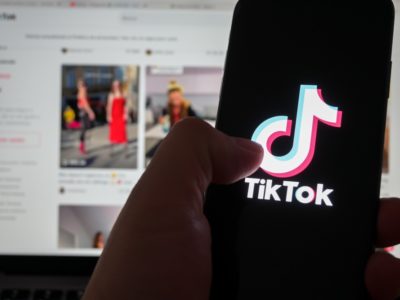In the 1980s, telecommunication company AT&T ran an ad campaign with the slogan “Reach out and touch someone.” Given our current marketing climate, truer words were never spoken. With ad blindness and tools like AdBlock, customers have become adept at ignoring marketing messages. So, what is a marketer to do?
Well, the best solution is to reach out and touch target audiences with compelling storytelling. One way to do this is through brand content.
In this article, you’ll learn:
- What branded content is
- The differences between branded content and other forms of advertising
- How to create branded content
- Examples of branded content
Let’s begin.
What Is Branded Content?
Branded content is content created by a company or content whose creation was funded by a company. This type of content ensures your marketing messages are centered around your brand and its values rather than your products or services. The goal is to raise brand awareness and create an emotional connection between you and potential customers. For example, you can post a behind-the-scenes video that highlights your company culture.
This strategy is already proven effective. Over one million hours were spent consuming branded content from January to December 2022. Branded content reads were at 112,269,177, a whopping 204% increase from the figure reported in 2021.
It’s because people love a good anecdote. Branded content is subtle, appealing to target customers naturally rather than disrupting their browsing activities.
Branded Content vs. Content Marketing
Now, you might be wondering, how is branded content different from content marketing? After all, they both use content creation to reach potential customers. Here are the differences:
- Purpose: The primary goal of branded content is increasing brand awareness and creating loyal customers. Content marketing aims to drive sales and conversions.
- Focus: Branded content crafts marketing messages around the brand’s story, mission, and values. Content marketing focuses on creating and distributing content to answer the questions and problems of a clearly defined audience.
- Audience: Branded content targets everyone because the goal is to make your brand known to as many people as possible. Meanwhile, content marketing is tailored to a very specific audience since you only want to speak to people who are likely to buy from you.
Simply put, branded content is just one kind of content within a broader content marketing strategy.
Branded Content vs. Native Advertising
Native advertising is another marketing concept that is sometimes confused with branded content. Native advertising is a type of paid marketing where ads look and feel like other content in the medium they appear. Take this New York Times piece about ballet dancers, for example.
The article looks like every other piece of content in the New York Times. It immerses readers into the ethereal world of ballet with essays, still images, and short-format videos. However, it is a paid advertisement for Cole Haan’s new collection of ballet flats, with as much emphasis on pointe shoes as the ballerina’s artistry.
Like branded content, native advertising doesn’t disrupt the user’s interaction with the media channel. Unlike branded content, it prioritizes product promotion.
Another point of difference between native ads and branded content is the location of the content. Native ads appear on third-party sites. The same piece of content on your website would be considered branded content.
5 Tips to Create Great Branded Content
Creating compelling brand stories doesn’t have to be challenging. With these five tips, you will master brand storytelling and skyrocket brand visibility in no time.
1. Define Your Brand Voice
Since branded content is about your brand and not your products or services, it makes sense to devote time to defining its voice.
Your brand voice on social media is how you convey brand personality in captions, comments, and other communication. This is one of the first things you should define right after you obtain a business license to sell your products or services. You want your audience to perceive you the way you want them to from the get-go. You wouldn’t want to market yourself as a serious brand only to change your strategy halfway. That will just confuse your audience.
Once you know your brand voice, the next step creating your brand guidelines. Brand guidelines are rules governing how you showcase this brand voice across all marketing channels. They ensure brand consistency in elements like color palette, typeface, logo usage, and tone of voice, helping you earn 33% more in revenue than brands with inconsistent branding.
For instance, Old Spice has a brand personality characterized by a quirky sense of humor. So, its content is usually full of spoofs and funny pictures. Did you notice the man riding the horse radish packet in the social media post above? These spoofs making fun of stereotypical manhood keep audiences delighted and brand recognition high.
2. Understand Your Audience
You already have some ideas about your future customers. For instance, you know which problems your solution fixes. But how well do you know them beyond their pain points or income range?
Developing a comprehensive buyer persona helps create a complete picture of your target customer, from audience demographics to psychographics. It answers questions like:
- Who are you creating content for?
- What type of media content do they like?
- What tone or language should you use?
- What are their interests and values?
- Which social media platforms do they prefer?
With these answers, you can create and deliver branded content that resonates with the core audience.
Check out this unconventional, totally fictionalized buyer persona:
You probably recognize this man from the hit show Squid Games. Don’t let that distract you from the wealth of insight this persona offers. You know he’s thrill-seeking and likes interactive and immersive content. He’s not likely to respond to emotional appeal because that’s not what he’s interested in.
3. Tell a Story
People like stories. A relatable narrative about your brand creates deep emotional connections with customers. This is why storytelling is integral to branded content, whether you’re producing videos, podcasts, or blog articles.
Like novels, comics, and other narrative forms, brand storytelling should have the essential elements of a good narrative: characters, setting, conflict, climax, and resolution. Some brands have a story embedded in their origin story. For example, the shoe brand TOMS came about after an inspiring volunteer trip.
But what if you don’t have a moving raison d’etre behind your brand?
You can create stories around the impact of your brand on your customers. Nike does this well. The brand’s series ‘What are you working on?’ follows athletes and creatives in their various journeys.
In the 28th installment of the series, we follow choreographer Parris Goebel as she prepares for a performance for New York Fashion Week.
Don’t worry if you don’t have the marketing spend Nike does.
User-generated content from your social media channels delivers the authenticity customers crave. You just need to know how to collect this UGC. Why not run contests with hashtags for your followers? You can tell them the best story will be featured on your marketing channels. They may even get a discount on their next purchase.
Another option is to feature compelling stories about your employees. For instance, you can write about one of your employees’ journeys, and how they evolved from being a follower to a competent, trustworthy leader.
Make sure you optimize content pieces, whatever blog post you come up with. This will help ensure its visibility in search engine results pages.
4. Use Visuals
Humans are visual creatures. Before words, we used drawings to communicate with each other.
In the digital age, visual content like infographics and images drive online communication, with 82% of global traffic from videos alone. So, if you’re not using visuals, you’re missing out on a lot of traffic.
High-quality visual media are often used by marketers to drive brand visibility because of their following characteristics:
- Easy to consume — a picture is worth a thousand words, and in a fast-paced, attention-challenged market, this is the competitive edge you need to attract audiences.
- Emotive — a well-placed image helps create the right emotional responses, enhancing your marketing message.
- Engaging — search results and SaaS email marketing campaigns with images have higher click-through rates than those without images.
Visuals make a difference in whether people get to see your branded content or not. Google users prefer visually rich media, so it ranks this type of marketing content higher than those without visual elements.
Integrating visual elements such as images, infographics, and videos can significantly enhance the impact of your branded content. Additionally, leveraging Google Sheets integrations, such as embedding interactive charts and data visualizations directly from your spreadsheets, can provide dynamic and real-time information to your audience.
5. Be Shareable
According to a Stanford study, the chances of going viral are one in a million. Even if you replicate a successful social media campaign, you won’t get the same results as the original. So, what makes a piece of branded content shareable?
There are no guarantees that a specific content piece will catapult your brand into the stratosphere. However, some factors drive word-of-mouth marketing. These are emotion and relevance.
Content that evokes strong emotional responses is twice as likely to drive people to act than rational content. Remember the video of the sea turtle that sparked a movement to ban plastic straws? It tapped into people’s shock and anger at the environmental damage of plastic waste.
Whether it’s happiness, sadness, hilarity, or shock, crank up the intensity. The deeper people are moved, the more likely they’ll share the post.
Relevance also plays a role in why people share content. If followers aren’t interested in what you post, they won’t share it with their social network. Hopefully, you’re already publishing relevant and exciting content. To increase shareability, tie content to trends in the social and cultural environment.
Other factors that affect content virility are content types (videos are more likely to be shared than blog posts), usefulness, relevant hashtags, and timing. If you incorporate these factors in content creation, you can reach a wider audience.
You can leverage influencer marketing, too. You can capitalize on their follower count to make your content viral.
Use email finder tools to get the addresses of the social media influencers who can promote your branded content.
Capitalizing on the Benefits of Branded Content
The market is overcrowded and competitive. It’s tempting to engage in a screaming match with your competitor. The louder and flashier you are, the more you stand out. However, digital customers have become good at tuning out distractions. If they engage in online ads, it is a deliberate and conscious action.
Consequently, you must create authentic content that attracts relevant audiences AND connects with them emotionally. Brand content helps you do that with compelling storytelling around your values and goals. Unlike content marketing or native advertising, this content strategy doesn’t explicitly focus on product promotion.
Follow these five marketing hacks on developing branded content. Don’t forget to get inspiration from the examples of campaigns that work. Soon, your content will skyrocket your brand visibility and create lasting impressions with audiences.





